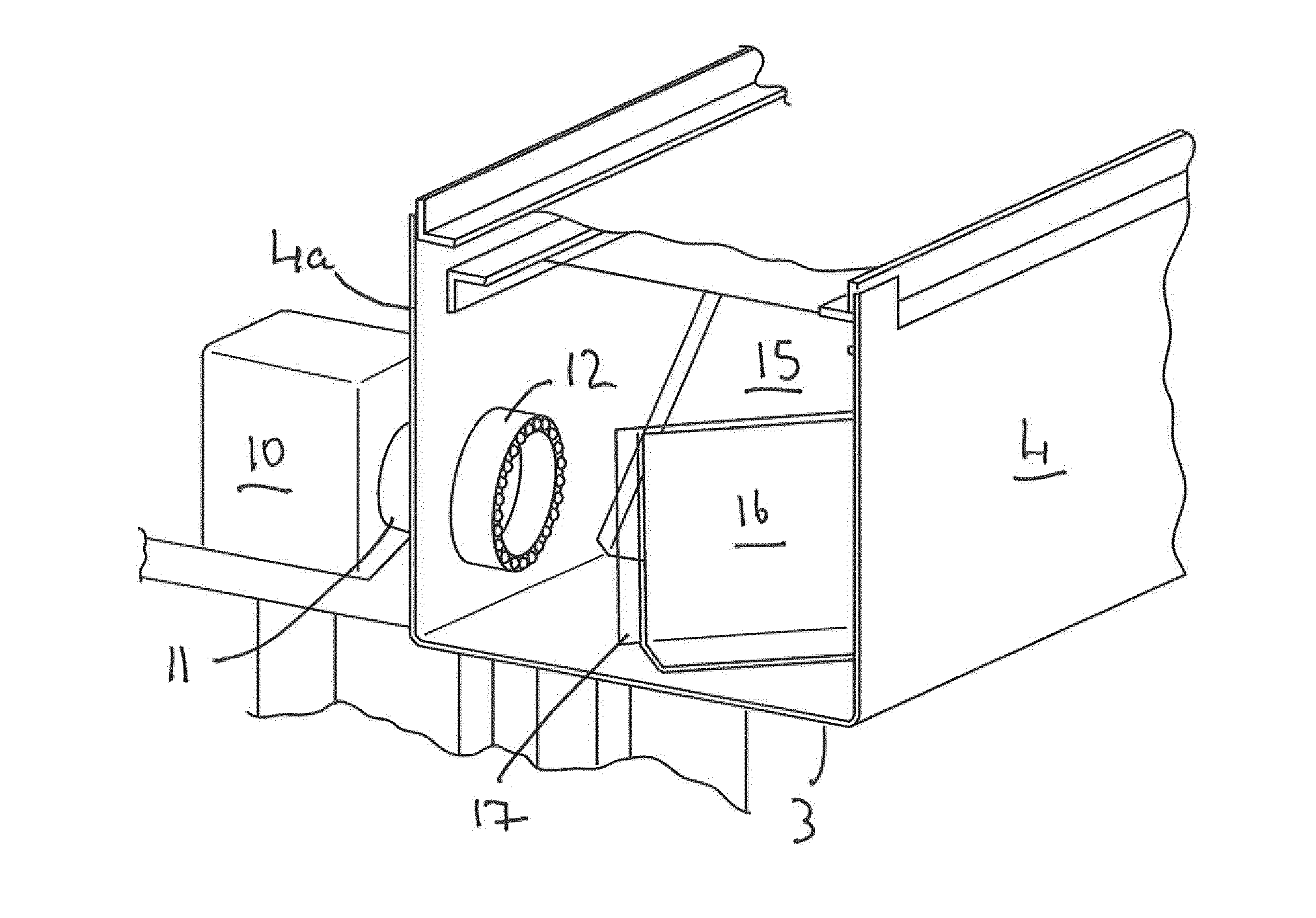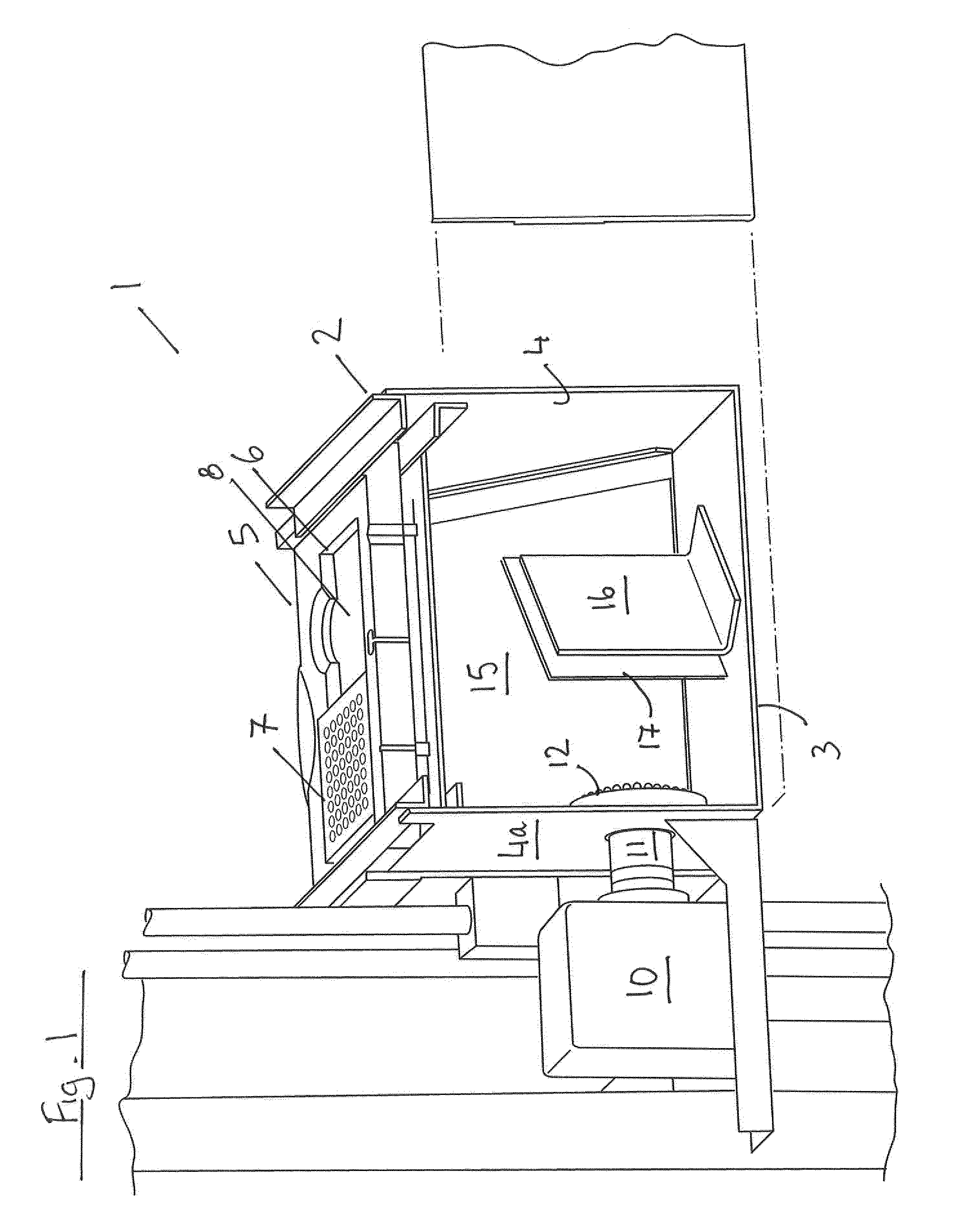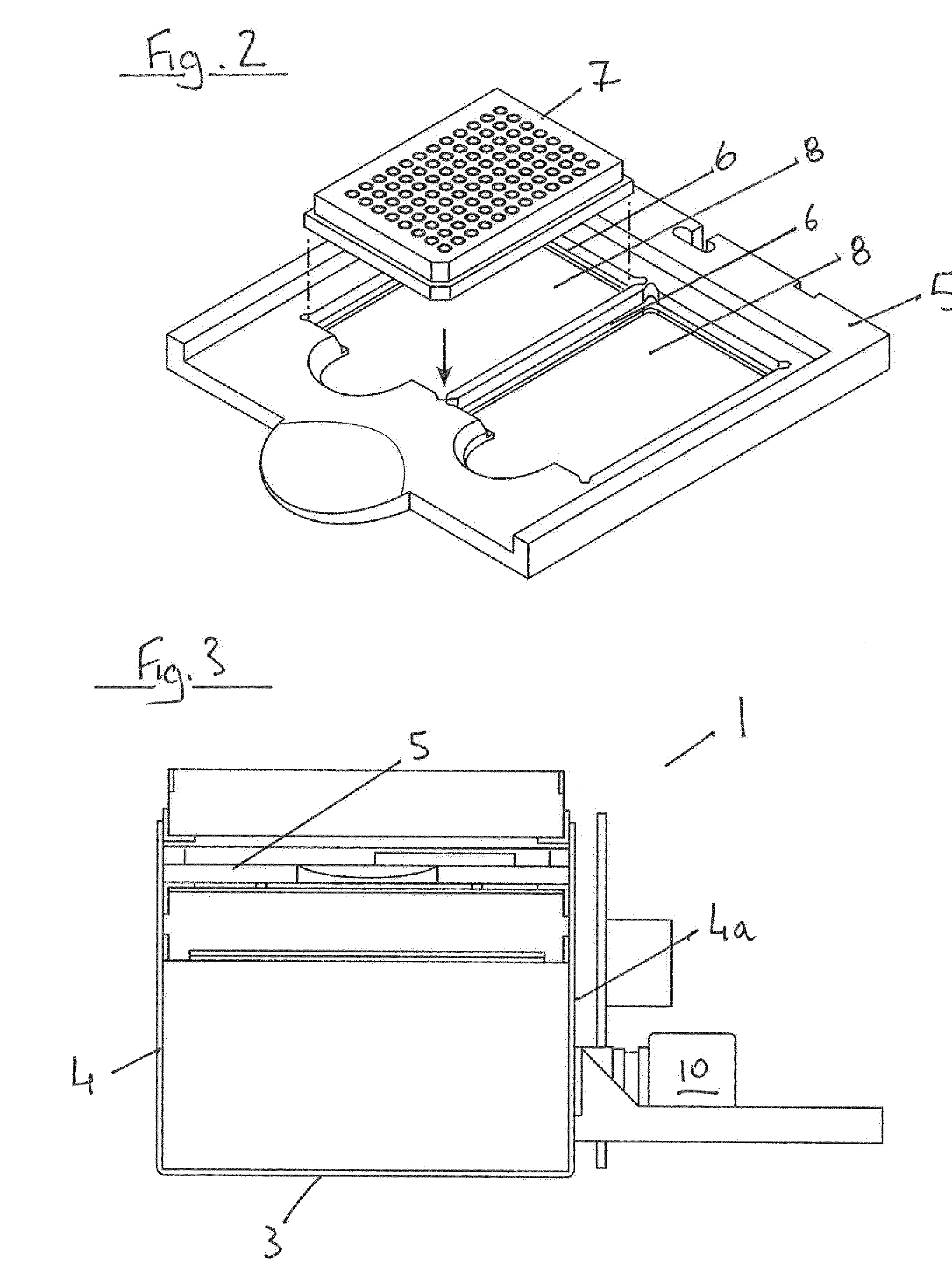Fluorescence microtitre plate reader
a microtitre plate reader and fluorescence technology, applied in the field of fluorescence microtitre plate readers, can solve the problems of unworkable systems, limit the amount of space available in which to construct a viable optical detector system, etc., and achieve the effect of eliminating any noise issues, reducing the distance to image focal length, and reducing the nois
- Summary
- Abstract
- Description
- Claims
- Application Information
AI Technical Summary
Benefits of technology
Problems solved by technology
Method used
Image
Examples
example 1
[0070]Referring to the figures, and initially to FIGS. 1 to 4, there is illustrated a fluorescence plate reader according to the invention, indicated generally by the reference numeral 1. The plate reader comprises a body 2 having a base 3, side walls 4 and a top 5 including two seats 6, each of which is adapted to receive a 96-well microtitre plate 7. In FIG. 1, a 96-well microtitre plate 7 is shown seated in one of the seats, and the second seat is not occupied. Each seat 6 defines an aperture 8 which allows light pass from the microtitre plate into and out of the plate reader body.
[0071]An air cooled QSI 616 CCD camera 10 (QSI Imaging) and CF12.5HA-1 fixed focal length lens 11 (Fujinon) are mounted in the sidewall 4a, with an LED ringlight (type-R LED Ringlight sold by SPECBRIGHT) 12 mounted to the sidewall 4a around the lens 11 (see FIG. 4). An optical system is provided in the body 3 to direct illumination light from the LED ringlight 12 to a base of the plate 7 and for directi...
example 2
[0074]A fluorescence plate reader of the invention may be employed to quantify the thermoduric bacterial load of a sample of milk. The process involves an initial step of preparation of the microtitre plate. In this example, a 96 well microtitre plate is employed. Two 200μ aliquots of each sample of milk are taken, and each aliquot applied to a well of the plate. An aliquot of fluorescent dye, Greenlight Dye (Luxel Biosciences Limited), 4× standard proprietary working concenration is added to each well. This dye has an absorption maximum of 380 nm and an emission maximum of 650 nm, thus having a broad stokes shift of 270 nm. Once the milk samples and dye have been added to the plate, mineral oil is added to the top of each well 100 ul.
[0075]The microtitre plate containing the test samples is then placed into a PCR thermocycler device, in this case TECHNE TC-5000, and the device is set to heat the samples to a temperature of 71.7° C. for 15 seconds (or 63° C. for 30 mins) to pasteuri...
PUM
 Login to View More
Login to View More Abstract
Description
Claims
Application Information
 Login to View More
Login to View More - R&D
- Intellectual Property
- Life Sciences
- Materials
- Tech Scout
- Unparalleled Data Quality
- Higher Quality Content
- 60% Fewer Hallucinations
Browse by: Latest US Patents, China's latest patents, Technical Efficacy Thesaurus, Application Domain, Technology Topic, Popular Technical Reports.
© 2025 PatSnap. All rights reserved.Legal|Privacy policy|Modern Slavery Act Transparency Statement|Sitemap|About US| Contact US: help@patsnap.com



